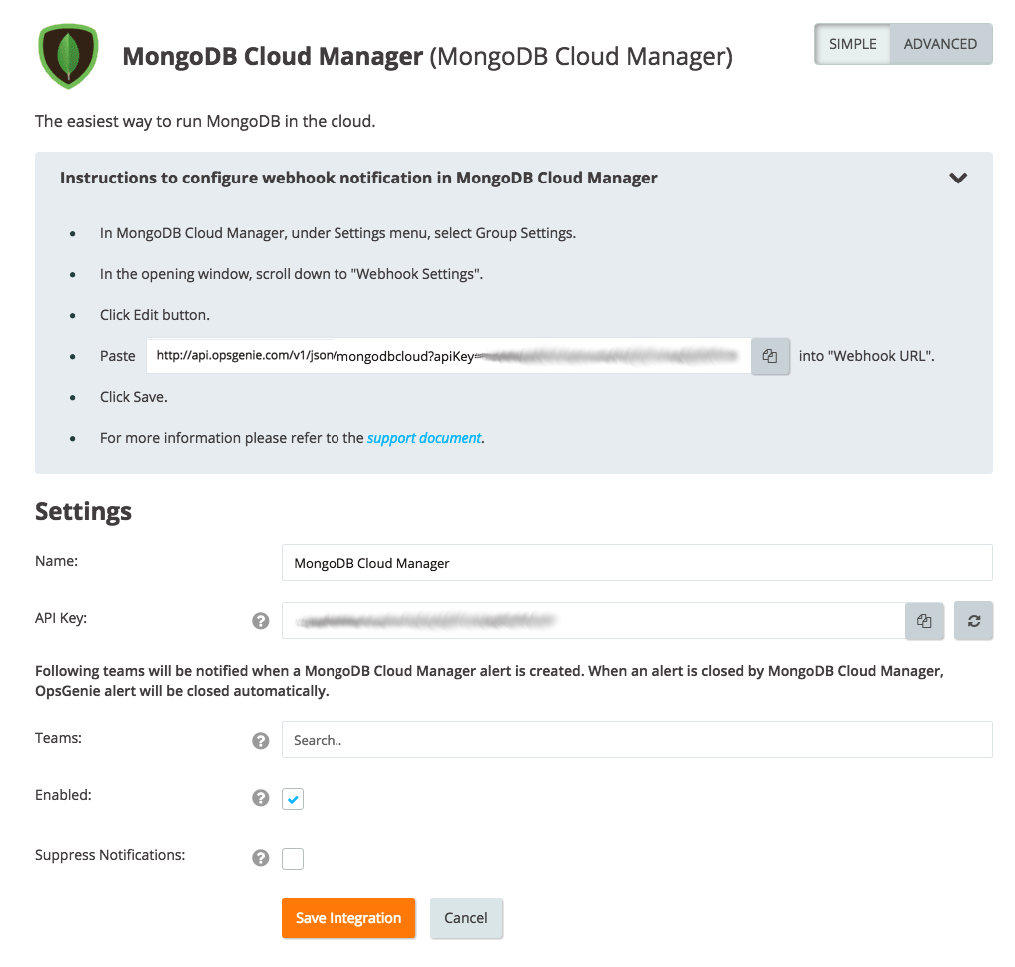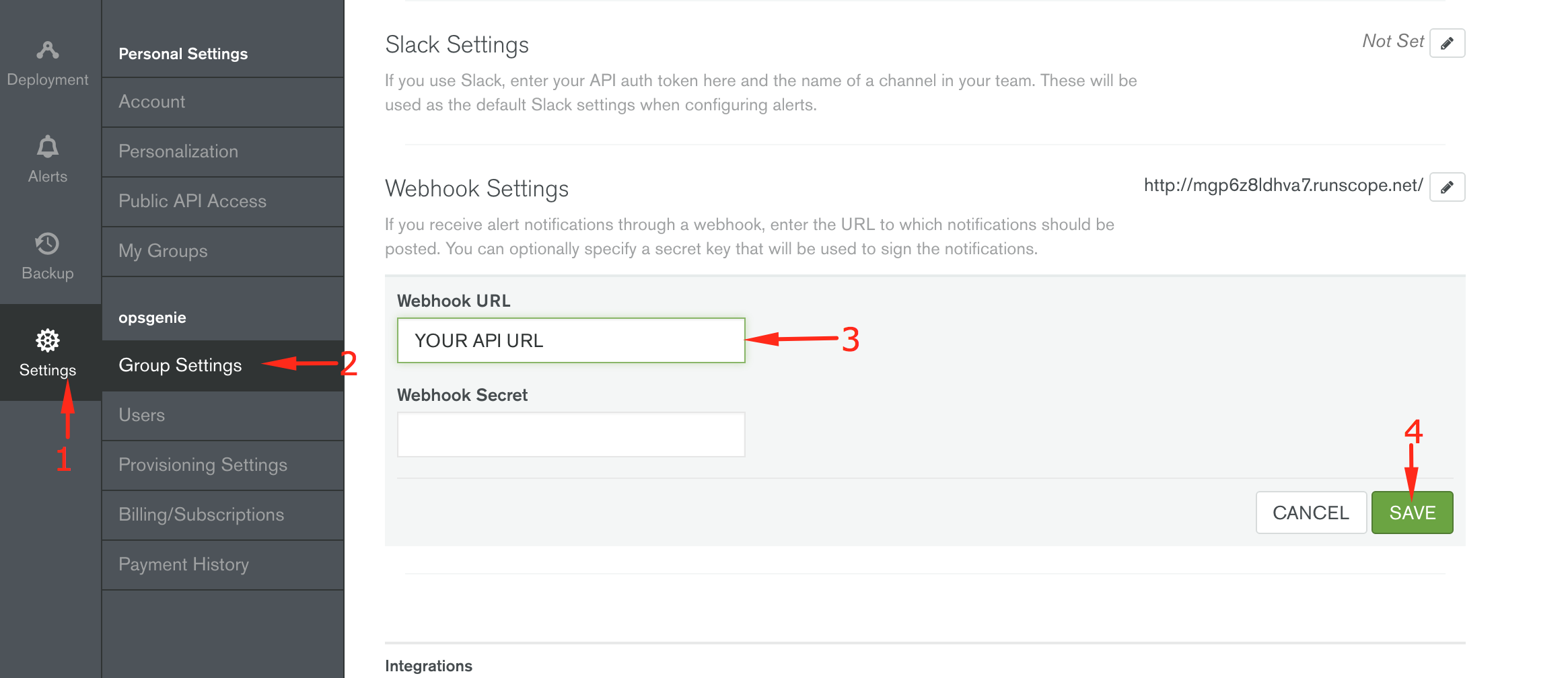MongoDB Cloud Manager Integration
MongoDB Cloud Manager makes it easy to set up, operate, and scale your MongoDB deployments in the cloud.

What does Opsgenie have to offer for MongoDB Cloud Manager users?
Opsgenie has a webhook integration with MongoDB Cloud Manager. Use the integration to send MongoDB Cloud Manager incidents to Opsgenie API with detailed information. Opsgenie acts as a dispatcher for MongoDB Cloud Manager alerts, determines the right people to notify based on on-call schedules– notifies via email, text messages (SMS), phone calls and iPhone & Android push notifications, and escalates alerts until the alert is acknowledged or closed.
This document describes how to configure the integration and details of data that Opsgenie receives from MongoDB Cloud Manager.
Functionality of the integration
- When an alert is created on MongoDB Cloud Manager, an alert is created in Opsgenie automatically through the integration.
- When an alert is closed on MongoDB Cloud Manager, the related alert is closed in Opsgenie.
Configuring Opsgenie side of the integration
- Please create an Opsgenie account if you haven't done so already.
- Go to Opsgenie MongoDB Cloud Manager Integration page.
For Free and Essentials plans, you can only add the integrations from the Team Dashboards, please use the alternative instructions given below to add this integration.
- Specify who is notified of MongoDB Cloud Manager alerts using the Teams field. Auto-complete suggestions are provided as you type.
An alternative for Step 2) and Step 3) is to add the integration from the Team Dashboard of the team which will own the integration. To add an integration directly to a team, navigate to the Team Dashboard and open Integrations tab. Click Add Integration and select the integration that you would like to add.
- Copy the API key by clicking on the copy button or selecting.
- Click Save Integration.

Configuration in MongoDB Cloud Manager
- In MongoDB Cloud Manager, click Settings from the navigation bar.
- Select Group Settings from the side menu.
- Scroll down to "Webhook Settings".
- Paste API URL into Webhook URL field.
- Click Save.

- For alert configurations in MongoDB Cloud, go to Alert Configuration
Sample payload sent from MongoDB Cloud Manager
Create Alert payload:
{
"alertConfigId": "5770e05ae4b096e0e2c23ca0",
"created": "2016-06-28T13:26:23Z",
"eventTypeName": "MONITORING_AGENT_DOWN",
"groupId": "5770d0ede4b0ca29d1781ccd",
"id": "57727affe4b0a7dc53fb9429",
"links": [
{
"href": "https://cloud.mongodb.com/api/public/v1.0/groups/5770d0ede4b0ca29d1781ccd/alerts/57727affe4b0a7dc53fb9429",
"rel": "self"
}
],
"status": "OPEN",
"typeName": "AGENT",
"updated": "2016-06-28T13:26:23Z"
}
This payload is parsed by Opsgenie as:
[
"title": "[MongoDB Cloud] Alert for : MONITORING_AGENT_DOWN",
"description": "
Event Type : MONITORING_AGENT_DOWN
Status : OPEN
Created : 2016-06-28T13:26:23Z",
"links": "https://cloud.mongodb.com/api/public/v1.0/groups/5770d0ede4b0ca29d1781ccd/alerts/57727affe4b0a7dc53fb9429"
]
Updated over 5 years ago
